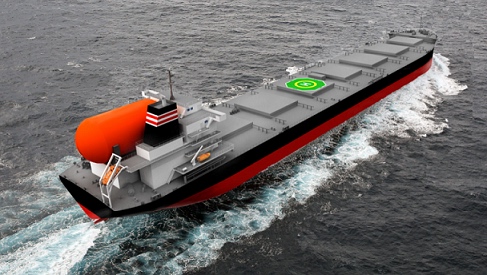The newbuilding quandary

Zane Berry from MCA Consulting writes for Splash today on what are the realistic propulsion options for ships ordered this decade.
The IMO 2020 sulphur limit amendment to MARPOL Annex VI has kicked in with the prospect of a global rash of fines for non-compliant carriers to be expected over the coming months. A few operators will have taken heed of the well-publicised deadline and sourced appropriate fuel suppliers or upgraded their gas scrubbers in readiness but the majority are opting to factor in fines to operating costs in the short term. Selecting the power plants for newbuilds or upgrades is not yet an easy call.
The gathering at the Marine Money forum in New York in November saw shipping executives apparently genuine in their commitment to becoming greener but without a practical means to deliver. It would seem shipowners and investors are unwilling to commit to newbuilds as the longer term solution to the fuel selection is not yet solved. The risk of technical obsolescence is high as continued use of heavy fuel oil (HFO) will come at a price but alternative fuels are not yet at a level where global supply reliability is commercial.
MISC has recently committed to having half of its world fleet as ‘dual fuel’ within 10 years which is only really an option for LNG carriers as they can simply draw on cargo to reduce emissions or plug any bunkering availability gaps. It may be a signal for the route for LNG carriers but in terms of orders for newbuild container, bulk or tanker vessels it doesn’t provide such a straight forward option. It seems expected that the lack of newbuilding orders will impact vessel availability in 2020.
Care is needed in interpreting the precise meaning of ‘dual fuel engines’ as some may define this as burning two fuels types at the same time. The issue being that older design engines require a small amount of liquid fuel (ie. Diesel/HFO) for combustion or the gas fuel, resulting in reduced emissions but not full optimisation.
More recently manufacturers such as MAN B&W have developed power plants that can switch seamlessly and completely between either liquid or gaseous fuels. Eg. LNG/Diesel or LNG/HFO. Both come with not only higher installation costs but increased complexity and hence operating and maintenance costs. Additional injectors, controls and lubrication systems are required.
In the longer term, electric powered vessels may be seen as the solution to the cleaner vessels quandary but the technology is not yet practical, with battery and alternative electrical generation (eg. hydrogen) showing promise but still a generation away. Alternative, cleaner fuels offer a temporary bridge whilst we wait for next generation technology, LNG being the current race leader but the infrastructure is lacking in supply volume and restricted geographical availability.
With more regulation expected and a variety of proposed engineering solutions being offered it may be that a clear pathway will take a little more time to crystalise. Pressure from rising vessel rates, penalties for outdated propulsion/fueling and shrinking vessel supply will inevitably result in some unsustainable decisions being taken early whilst other may get it right.
Further investigation into multi-fuelled options warrants further investigation as renewable, chemical and combustions technologies can all combine when based around electric drives trains.

One could state that we need less LNG tankers because LNG still is an fossil fuel and it needs about 15% or more NG than than the delivered product.
We are replacing ‘coal’ but if the replacement is as bad as or worse than we are only being fooled that it would be better for the atmosphere.